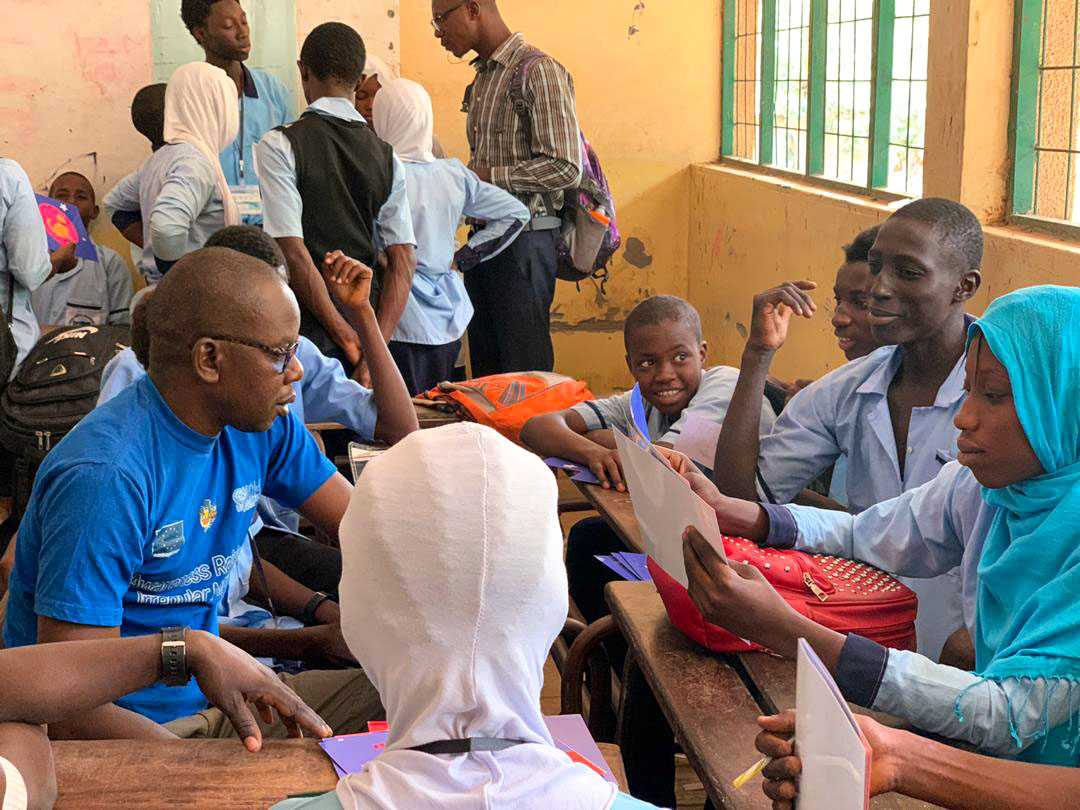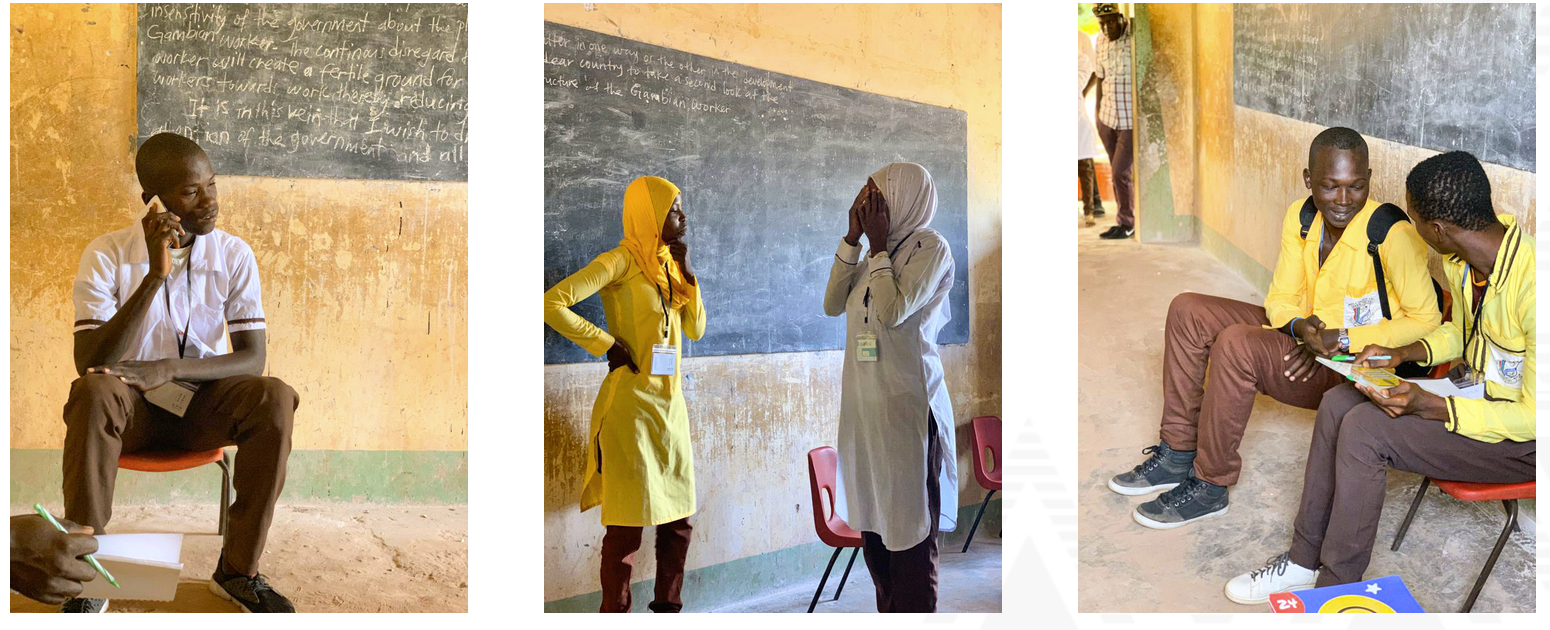What is gamification?
Gamification is an approach within the broader Communication for Development (C4D) umbrella that incorporates game elements into learning.
For example, in The Gambia, the approach was piloted for an initiative aimed at raising awareness on safe migration. An improvised theatre game was conceptualized through participatory design and consultation with young Gambians. You can learn more about it here.

Final year secondary students in The Gambia prepare an improvisational theatre with the help of returnees – picture by IOM
Why should you use gamification ?
- It’s a fun and engaging way for young people to learn about the risks of irregular migration and its alternatives, including safe migration options.
- Games are engaging as a tool for school outreach, as students may view it as a break from regular school routine.
- Gamified learning builds critical thinking skills among young people. It uses active listening, learning and participation.
- The competitive element bode well with young people, who will be eager to win and edge out their peers while learning at the same time.
How to use gamification?
There are many different ways to employ the approach! In The Gambia, IOM uses improvised theatre as a tool to build a game around safe migration. We did something similar in Nigeria using board games.
Think about what games the members of your target audiences (or your personas) are interested in—and be creative about how you apply the key rules of the game to the issue being discussed.
Gamification tips & tricks
- Maximize local culture, traditions, and practices. Gamification works best within the context of a community’s interests. The process of designing a game must involve close consultation with target audiences, which allows them to gain ownership.
- Design, pre-test and redesign. The first iteration of your game probably won’t work. There will inevitably be tweaks, especially after the game is pre-tested. Be open to changes, even those you might not have expected.
- Think about scaling up. If your game goes well, it would be useful to think about how it can be replicated in other communities with similar cultures.

Final year students in The Gambia performed their take on migration for peers – picture by IOM
Did you enjoy this article? There’s much more! You can learn how to play the featured improvisation theatre game IOM designed in The Gambia yourself. Take our 30 minutes online course and become a pro. You can find it in our tools sections and it’s totally free!



